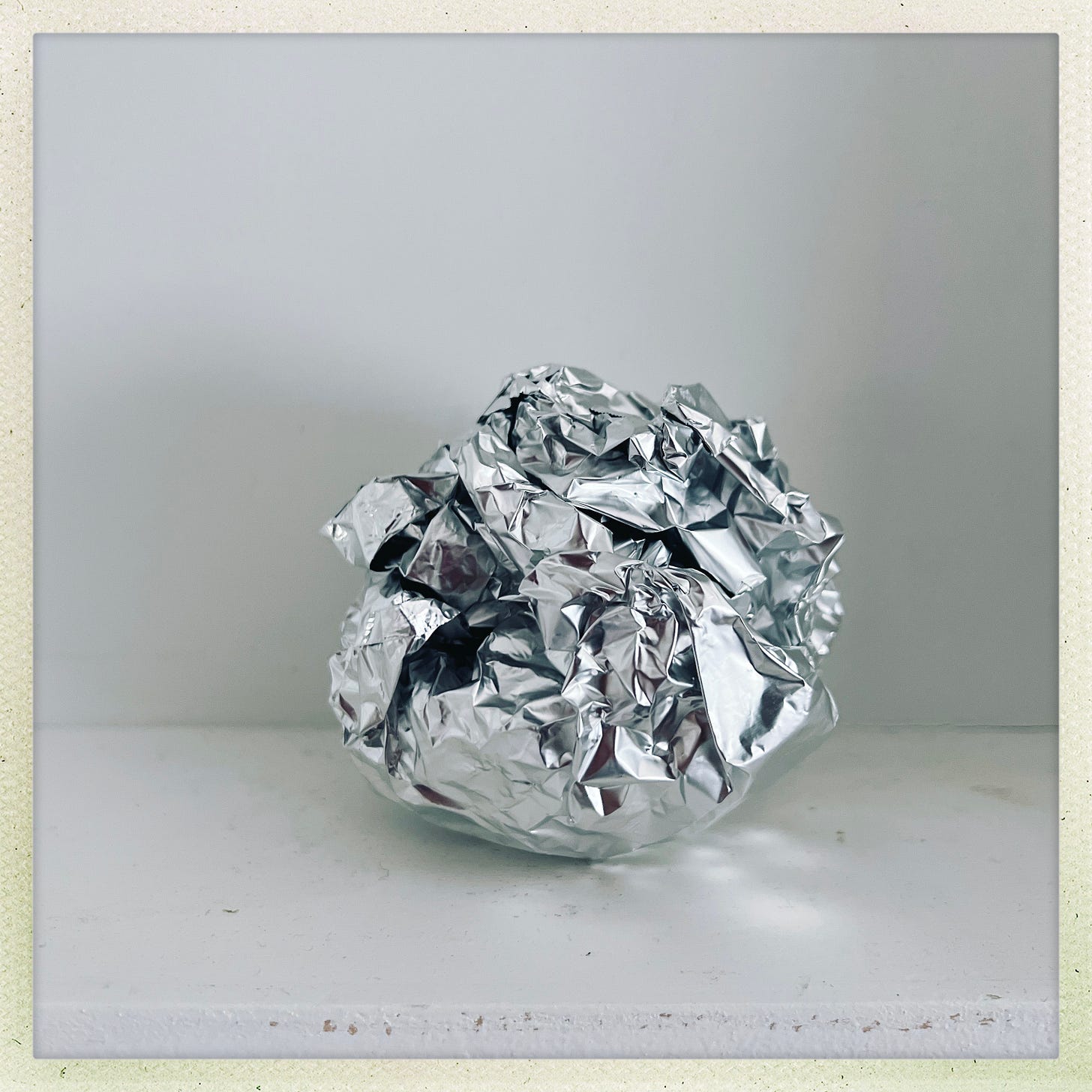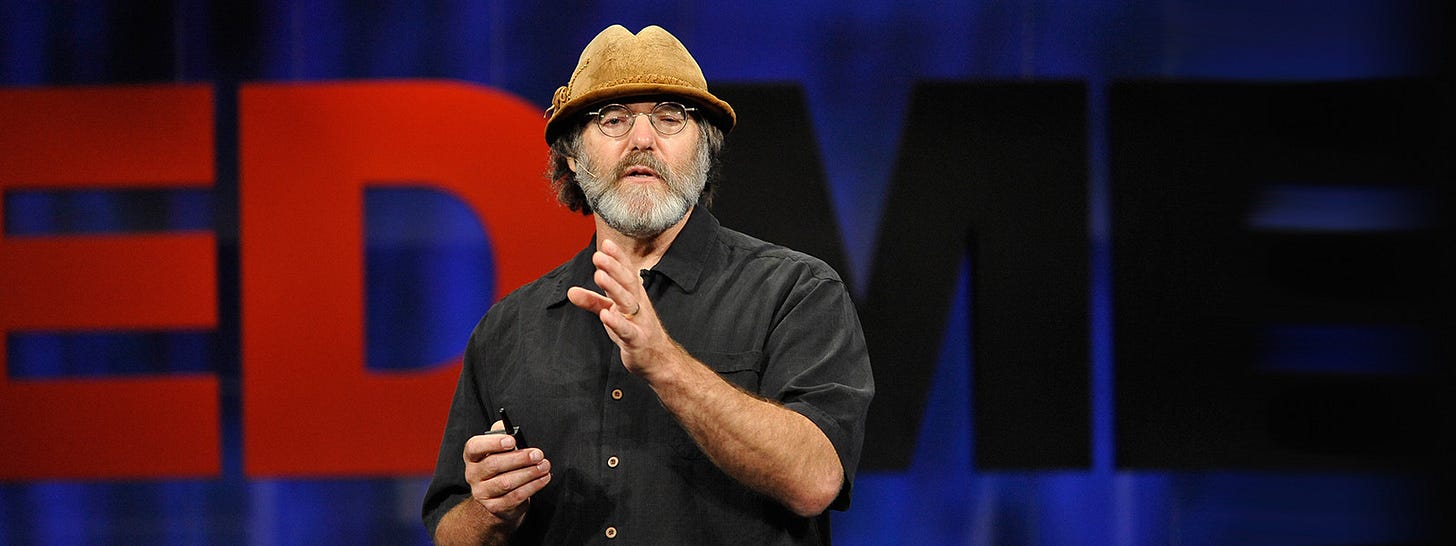Hello Friends!
The weather has been very favorable these past few days for getting a lot of planting done in the vegetable, pollinator and medicinal gardens at my River’s Edge Farm in the Hudson Valley. For the past four years, I’ve been building its framework, starting with an enclosed organic vegetable garden in the sunniest and most accessible location, near my home, and building 50 of the 66 raised beds myself. In most of them, I grow food for my household and a portion is donated to the Columbia County Recovery Kitchen in Hudson, NY.
Enough about what’s happening at River’s Edge Farm, NY!
I hope you enjoy reading the posts in the Newsletter #10. You will learn about the Search Engine I have been using for years and why; an easy and worthwhile Recycling Tip; Bunds; What is Missing?; Things to Look Forward To and a Favorite TED Talk
#1- Ecosia
Ecosia is a search engine, and when you use it to search the web, they plant trees. Searching with Ecosia is like searching with any other search engine, with one major difference. They use the profits they make from your searches to plant trees where they are needed most.
How it works:
1-You search the web with Ecosia
2- Search ads generate income for Ecosia
3- Ecosia uses this income to plant trees, almost 150 million so far.
Ecosia also shares inspiring stories on their site. This one is about Moses, who used to produce charcoal. Now he’s saving chimps by planting trees.
People change. Sometimes in the best, and most surprising ways.
Ecosia met Moses in Uganda while visiting one of their reforestation projects with the Jane Goodall Foundation. He is a conservationist who manages a tree nursery, which in turn helps to sustain the local chimp population.
But how?
Moses grows trees funded by Ecosia searches, which are planted along rivers that connect existing forest patches. Thanks to these ‘forest corridors’, chimpanzees can safely roam from one forest to the next as they forage for food or search for mates. Before the forest corridors were planted, the chimps regularly came into conflict with local farmers. As their natural habitat dwindled, the great apes started to venture into agricultural fields in search for food. Many chimps were shot by farmers and their babies were sold into the illegal pet trade. By planting forest corridors, Moses has dramatically improved this tragic situation because the chimps no longer need to leave the forest. Now, chimps and humans live in harmony together. But that’s not the whole story. The more we talked to him, the more we realised that Moses wasn’t always an environmental leader. He used to cut down trees in order to produce charcoal for income. This video tells the story of his transformation.
#2- Aluminum Foil
-aluminum foil bits-
Don’t throw the bits into your recycling bin.
Did you know that aluminum is infinitely recyclable, but tiny pieces of aluminum will just get lost in the process, the kinds that are wrapped around chocolates for example.
Instead, save all the small pieces in a jar.
Once you have enough, roll them up into a ball the size of your fist, using a larger piece of used aluminum foil.
Then you can add it to your recycling bin.
This increases the likelihood it will actually be recycled and reused all over again.
Why Recycle Aluminum Foil
Aluminum is one of the highest-value materials you can recycle, and it can be reprocessed into new aluminum in just 60 days. When purchasing Aluminum Foil, the most planet friendly brand is If You Care which is made from 100% recycled aluminum foil.
Nearly 75 percent of aluminum produced in the U.S. is still being used
**Only clean aluminum foil can be recycled. Make sure it is a clean as possible before recycling
Source: Via Instagram @greenigyme and Earth911.com
#3- Bunds
Bunds are semi-circular shaped pits that capture rainwater.
They are dug in project areas in Africa in order to capture rainwater that will otherwise get washed away over the dry, barren soil. By digging bunds, you can regreen large areas in a very short amount of time, benefiting biodiversity, nature, people and – eventually our climate.
Global warming and persistent droughts cause land degradation in many African areas. The top layer of the soil becomes hard, which prevents rainwater from infiltrating into the soil. This rainwater will flow to lower areas, and wash away the upper layer of fertile soil. The digging of semi-circular bunds opens up this hard top layer, and retains the rainwater.
Watch video about the work being done in Kuku, Kenya
Desmond Tutu talks about the need to create bunds :
Watch Justdiggit video:
Source: Justdiggit
#4- What Is Missing?
A global memorial to the Planet by Maya Lin
What is Missing? is a multi-site memorial created by Maya Lin to raise awareness through science-based artworks about the present sixth mass extinction of species, connect this loss of species to habitat degradation and loss, and emphasize that by protecting and restoring habitat, we can both reduce carbon emissions and protect species.
The site has a vast amount information that is inspiring and educational. I recommend that you click on solutions on the lower right of the site and find the sections about Species, Habitat and Anthro.
For example, in the Anthro section, here are a few hopeful highlights happening around the world:
SUCCESS STORIES
City With Lowest Carbon Emissions
Europe’s Most Sustainable City
Food Waste Recycling In South Korea
Germany Recycles More Than Any Other Country
San Francisco Bans Plastic Water Bottles
Click here to read the list of Species and Habitats from their history, to the success stories, disasters and extinctions.
This is one of the stories of hope.
Sea otters hold hands when they sleep to prevent them from floating away from each other.
In 1911, sea otters gained protection under the International Fur Seal Treaty, after their numbers had plummeted to 1,000 during the commercial fur trade. Today, there are estimated to be over 106,000 worldwide, though sea otters are still on the endangered list, due to oil spills, fisheries by catch causes unknown numbers of mortalities and El Niño events can reduce food availability.
For more information about how you can help, go to Defenders of Wildlife. org.
#5- Things to Look Forward to: An Illustrated Celebration of Living with Presence in Uncertain Times, Disguised as a Love Letter to the Future by Sophie Blackall
-excerpted from The Marginalian by Maria Popova-
In the dismorrowed undoing of 2020, a world suddenly time-warped by a global quarantine, suddenly sobered to the perennial uncertainty of the future — loss beyond the collective heartache besieged the miniature world of Caldecott-winning children’s book maker Sophie Blackall. She coped the way all artists cope, complained the way all makers complain: by making something of beauty and substance, something that begins as a quickening of self-salvation in one’s own heart and ripples out to touch, to salve, maybe even to save others — which might be both the broadest and the most precise definition of art.
One morning under the hot shower, Sophie began making a mental list of things to look forward to — a lovely gesture of taking tomorrow’s outstretched hand in that handshake of trust and resolve we call optimism.
As the list grew and she began drawing each item on it, she noticed how many were things that needn’t wait for some uncertain future — unfussy gladnesses readily available in the now, any now. A century after Hermann Hesse extolled
“the little joys”as the most important habit for fully present living, Sophie’s list became not an emblem of expectancy but an invitation to presence — not a deferral of life but a celebration of it, of the myriad marvels that come alive as soon as we become just a little more attentive, a little more appreciative, a little more animated by our own elemental nature.
You can relish a rainbow and a cup of tea, sunrise and a flock of birds, a cemetery walk and a friend’s newborn, the first blush of wildflowers in a patch of dirt and the looping rapture of an old favorite song. You can’t tidy up the White House, but you can tidy up that neglected messy corner of your home; you can’t mend a world, but you can mend the hole in the polka-dot pocket of your favorite coat. They are not the same thing, but they are part of the same thing, which is all there is — life living itself through us, moment by moment, one broken beautiful thing at a time.
Pulsating through the book, through the list, through the life is the one thing that saves us all: love — the love of partners and of friends, of children and of flowers, of books and music and list-making and this whole improbable living world. Indeed, the entire book is one extended love letter to life itself, composed of the miniature, infinite loves that animate any given life.
Subscribe to the Marginalian here
About Sophie Blackall:
BELOVED AUTHOR: Sophie Blackall is a world-renowned, two-time Caldecott award-winning children's book author and illustrator. Whether your kids grew up with Ivy & Bean and If You Come to Earth, or you're discovering Blackall's empathetic voice and gorgeous artwork for the first time, you're sure to fall in love with her new book for adults and folks of all ages.
UPLIFTING AND HOPEFUL: We all need a little reassurance that things will get better—this book offers just that, and so much more. It reminds us that while looking forward is important, sometimes we can take matters into our own hands and create our own joy when we need it most.
#6- 6 Ways Mushrooms Can Save The World
Mycologist Paul Stamets lists 6 ways the mycelium fungus can help save the universe: cleaning polluted soil, making insecticides, treating smallpox and even flu viruses. And his mother was healed.
Watch the Ted Talk here
Wishing you and your loved ones all the best.
See you soon again!
Priscilla

















So very helpful - thank you, truly.